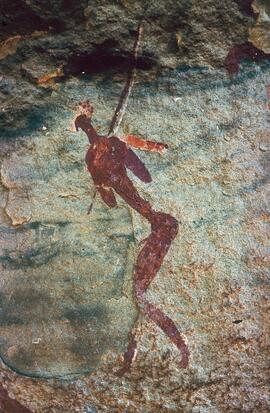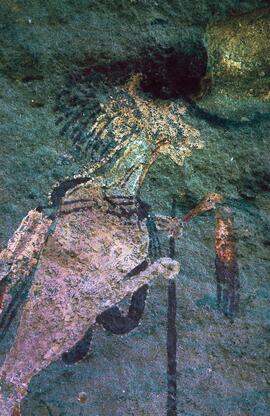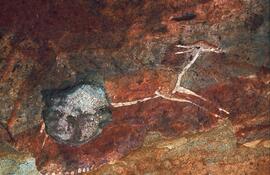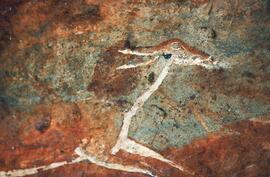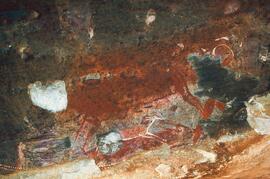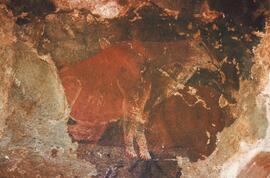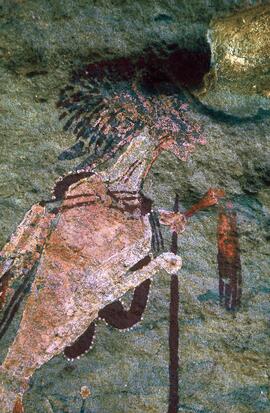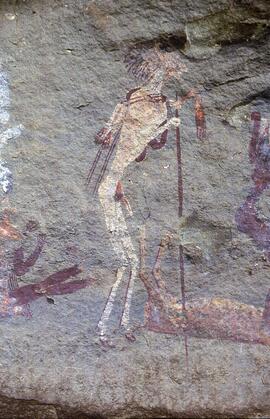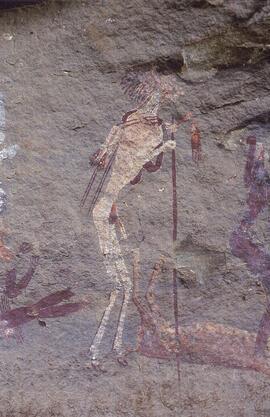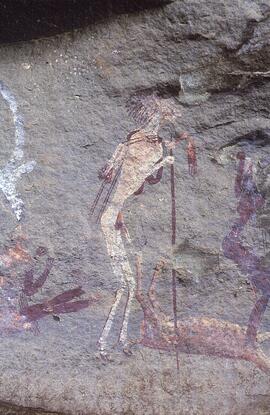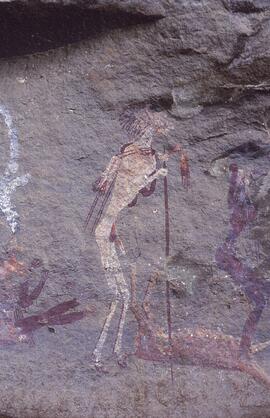JHH JHH-JHH-01-1672H.jpg
·
Item
·
Unknown
Part of Hone, John
Rain-making was one of the San shamans’ most important tasks. The southern San thought of the rain as an animal. This animal was an amorphous quadruped that generally resembled a hippopotamus, but it could also look like an ox or an antelope. A male rain-animal, or rain-bull, was associated with the frightening thunderstorm that bellowed, stirred up the dust, and sometimes killed people with its lightning. The female rain animal was associated with soft, soaking rains. Wide Valley II

